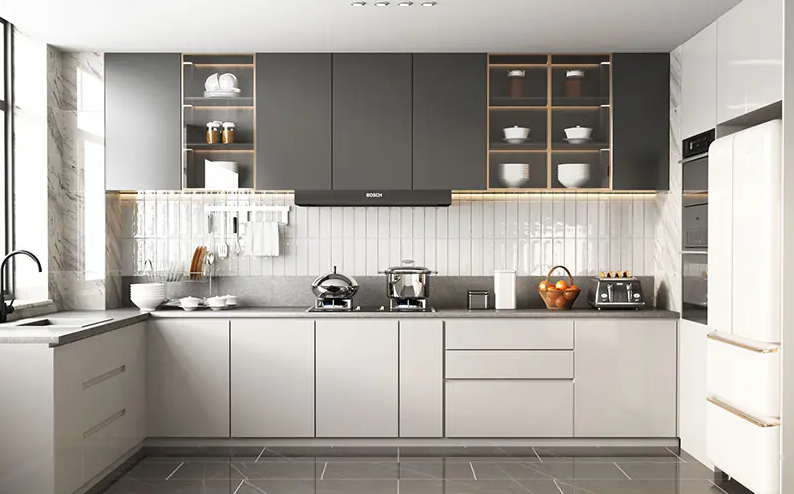Every home tells a story through the way space is used, arranged, and experienced. For many homeowners, creating comfort within limited areas requires not just aesthetic taste but smart design thinking. A well-designed cabinet becomes more than furniture — it’s an organizer, a visual statement, and a daily companion. That’s why many homeowners turn to a Custom Cabinet Factory, where design meets lifestyle and every inch of storage finds purpose.
1. The Role of Cabinets in Everyday Living
Cabinets shape how people interact with their homes. They store daily essentials, conceal clutter, and influence how open or cozy a room feels. When cabinets are designed with functionality in mind, they can transform tight spaces into calm, organized zones that promote ease and flow.
A custom-built cabinet doesn’t follow a one-size-fits-all model. It reflects habits, routines, and individual needs. For someone who cooks often, additional shelving near the stove creates convenience. For another who values minimalism, hidden drawers and seamless finishes maintain visual harmony.
The real magic lies in the details—where form and function blend naturally, and each handle, hinge, or drawer placement contributes to the rhythm of daily life.
2. Rethinking Storage for Modern Lifestyles
Today’s homes are more flexible than ever. Open layouts, multifunctional furniture, and smaller living spaces challenge traditional design concepts. Cabinets must adapt to this shift by becoming smarter, sleeker, and more responsive.
Modern cabinet design is about understanding how people live, not just where they live. For example:
-
Adaptability: Modular cabinetry can be rearranged when spaces change purpose.
-
Flow: Cabinet alignment influences how light moves through a room.
-
Sustainability: Choosing eco-friendly materials brings both style and responsibility.
-
Integration: Seamless fitting with appliances enhances usability and aesthetics.
Homeowners now look for cabinetry that doesn’t just “store things,” but supports their evolving lifestyles.
3. Function Meets Form: The Art of Smart Storage
Designing efficient storage isn’t about hiding more items—it’s about creating balance. Functional design celebrates simplicity, optimizing space while maintaining beauty.
Below is a comparison of cabinet design functions across different home areas:
| Room Type | Storage Focus | Common Design Feature | Visual Goal |
|---|---|---|---|
| Kitchen | Easy access to cookware, utensils | Pull-out drawers, vertical racks | Bright, open look |
| Living Room | Media organization, books | Floating cabinets, concealed compartments | Warm minimalism |
| Bedroom | Clothing, accessories | Built-in wardrobes, sliding doors | Cozy and calm |
| Bathroom | Toiletries, towels | Wall-mounted units | Clean, light ambiance |
| Entryway | Shoes, coats | Narrow vertical cabinets | Efficient use of height |
This table illustrates how the same concept—cabinetry—adapts uniquely to every living area. The right approach blends storage function with the emotional tone of a room.
4. Material and Texture Harmony
Cabinet design today isn’t limited to traditional wood finishes. Surfaces now tell stories through textures, colors, and tactile experiences. Matte finishes add sophistication, while glossy ones reflect light and expand perceived space.
Combining textures such as veneer with soft-touch laminates creates both visual and sensory contrast. Even subtle handles or natural grains can shift a room’s atmosphere from rustic to contemporary.
Designers often recommend balancing textures for comfort: one reflective, one matte, and one organic. This trio approach ensures a space feels layered yet unified.
5. Hidden Intelligence in Modern Cabinetry
Behind smooth doors and quiet drawers lies innovation. Cabinet design has evolved to include silent-closing systems, adjustable shelving, and space-saving pull-outs. These improvements are not visible at first glance, but they redefine convenience.
Some examples of functional design principles include:
-
Multi-level compartments – optimizing storage height.
-
Corner pull-out trays – transforming unused corners.
-
Vertical dividers – organizing tall items neatly.
-
Under-sink units – maximizing every bit of space.
-
Integrated lighting – illuminating interiors for better visibility.
Such features enhance usability and comfort while maintaining a clean appearance. The result is effortless daily interaction — design that feels invisible yet indispensable.
6. How Design Shapes Emotion
Beyond structure and materials, design influences mood. Cabinets with softer edges, neutral tones, and rhythmic alignment promote relaxation. In contrast, bold contrasts and geometric patterns add personality and energy.
Interior psychology suggests that cluttered visuals can increase stress. Organized spaces, on the other hand, create calm and focus. Smart cabinetry works silently to protect that serenity, keeping visual order while allowing individuality to shine.
7. Creating Flow Between Rooms
Cohesion is a mark of thoughtful design. Instead of treating each room as an isolated unit, many homeowners now favor continuity—consistent finishes, repeated motifs, and connected layouts.
Cabinets can unify an entire home when color palettes and textures echo each other subtly. A kitchen with oak accents may transition seamlessly into a living area with matching shelving. This approach makes even compact homes feel larger and more intentional.
When transitions between rooms feel natural, the entire environment gains rhythm and flow.
8. The Personal Touch: Customization Options
Customization empowers homeowners to express personality through function. Options range from color variations and handle designs to internal layouts that cater to specific needs.
Popular customization choices include:
-
Adjustable shelving for flexibility
-
Mixed open and closed units for visual balance
-
Built-in lighting for ambiance
-
Integrated desks or vanity corners
-
Hidden charging points and cable channels
These personalized touches bring both elegance and ease into everyday routines.
9. Balancing Aesthetics with Practicality
True design harmony happens when beauty serves function. Cabinets should enhance a home’s look while supporting its use. For example, open shelving adds visual lightness but needs careful curation. Closed cabinets, by contrast, maintain tidiness but require accessible layouts.
The art lies in combining both. A single wall unit may mix display shelves with concealed storage. This balance turns simple cabinetry into design storytelling.
10. The Future of Functional Design
Tomorrow’s cabinets are expected to blend seamlessly with digital living. While technology plays a role, emotional comfort remains at the core. Materials may evolve, mechanisms may improve, but the essence—crafting space around human life—will remain unchanged.
Homeowners increasingly value authenticity, durability, and emotional resonance in their interiors. Cabinets become not just containers, but silent companions that reflect lifestyle, taste, and aspiration.

11. Bringing Everything Together
When storage merges with artistry, everyday life feels effortless. A cabinet becomes more than a utility—it turns into a trusted element that simplifies daily tasks and uplifts surroundings.
Every well-planned cabinet has a purpose: to bring peace, order, and identity into homes. The craftsmanship behind it defines quality of living in subtle, lasting ways.
That is the philosophy guiding Haibo, a name associated with thoughtful design, careful material choice, and enduring comfort in modern living spaces.

 English
English русский
русский Français
Français Español
Español bahasa Indonesia
bahasa Indonesia عربى
عربى



